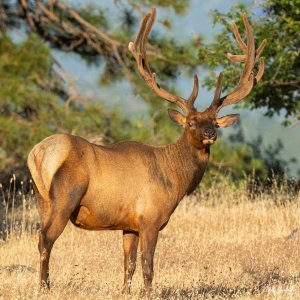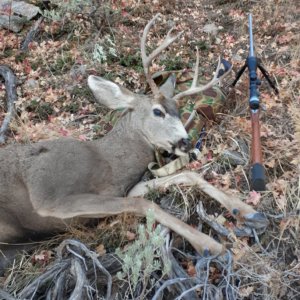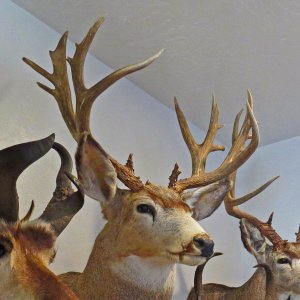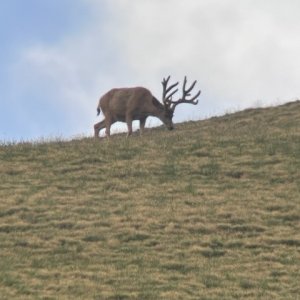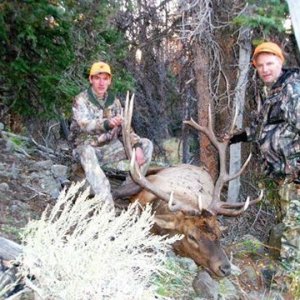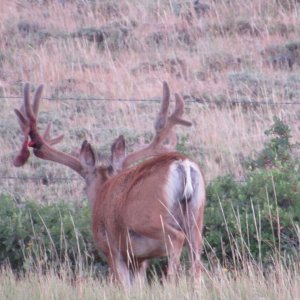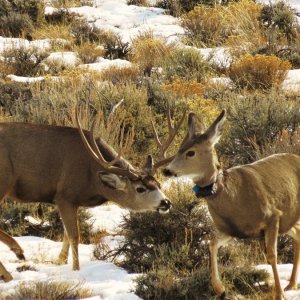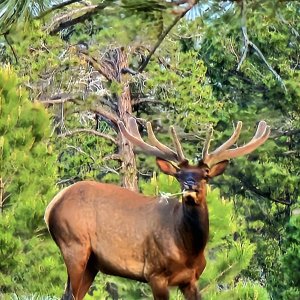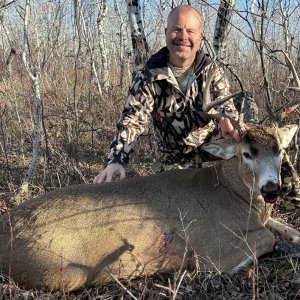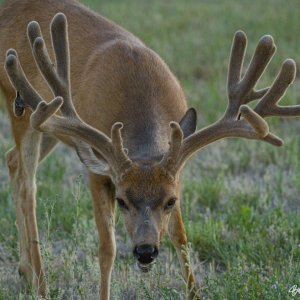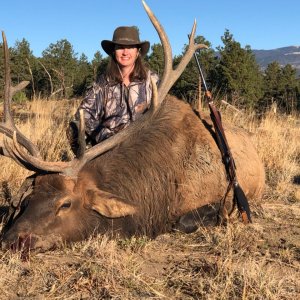LAST EDITED ON Oct-10-06 AT 08:47AM (MST)[p]Just finished up my '06 archery elk season & I have to say the lack of winter & spring moisture did a number on a lot of the bulls. Many hardcore AZ hunters that understand what moisture is needed to produce top end bulls had already seen & predicted a bad antler growth year, but for some reason a ton of hunters still think that big summer rains equal big antlers in the desert. I got some first hand pictures that will probably blow some of you out of the water.

This is a bull I filmed last year (2005). I gave this bull a score of 380+.

Here is the bull this year dead. He dropped about 60-65" this year because of the lack of winter moisture.
I want to say that not all of the bulls dropped that many inches but most dropped 10-30". AZ has good genetics but it stinks to get drawn on a drought year. What a difference a year can make in your trouphy dreams!
Thanks,
Craig Steele

This is a bull I filmed last year (2005). I gave this bull a score of 380+.

Here is the bull this year dead. He dropped about 60-65" this year because of the lack of winter moisture.
I want to say that not all of the bulls dropped that many inches but most dropped 10-30". AZ has good genetics but it stinks to get drawn on a drought year. What a difference a year can make in your trouphy dreams!
Thanks,
Craig Steele





